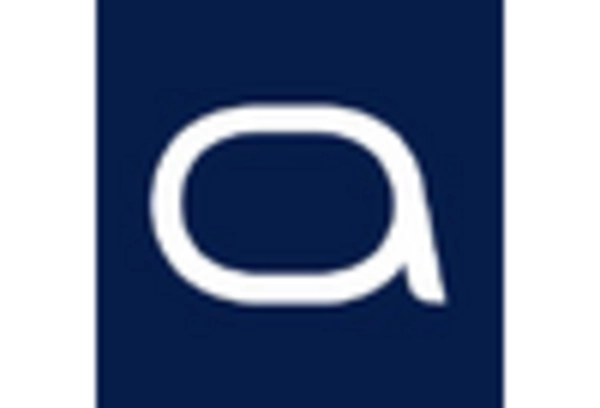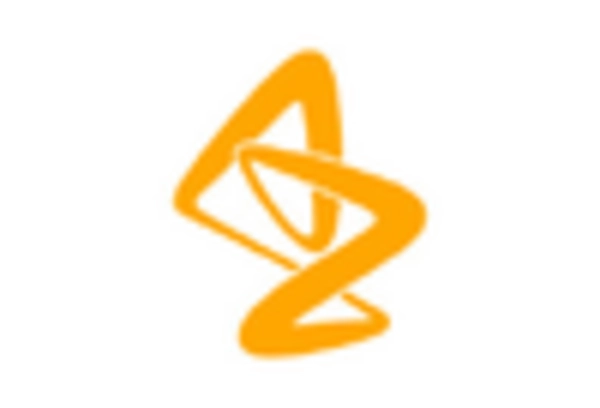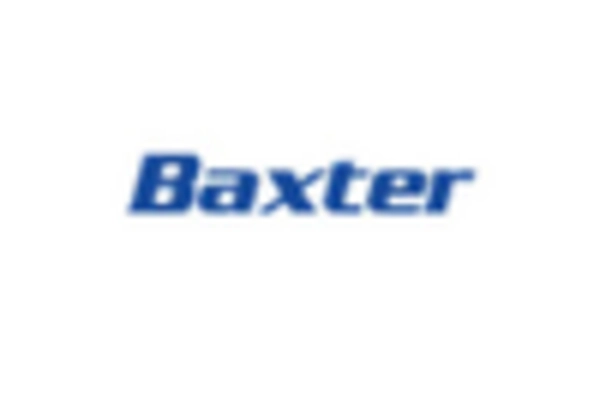Aging Population
The demographic shift towards an aging population in the US is significantly influencing the anesthesia drugs market. Older adults typically require more surgical interventions, which in turn increases the demand for anesthesia drugs. By 2030, it is estimated that nearly 20% of the US population will be over 65 years old, leading to a higher prevalence of age-related health issues that necessitate surgical treatment. This demographic trend suggests a sustained increase in the consumption of anesthesia drugs, as healthcare systems adapt to meet the needs of this growing patient segment. The anesthesia drugs market is poised for expansion as it aligns with the healthcare demands of an aging society.
Rising Surgical Procedures
The increasing number of surgical procedures in the US is a primary driver for the anesthesia drugs market. As healthcare facilities expand their surgical offerings, the demand for effective anesthesia management rises correspondingly. According to recent data, the surgical volume in the US is projected to grow by approximately 5% annually, leading to a heightened need for anesthesia drugs. This trend is particularly evident in outpatient surgeries, which have surged due to advancements in surgical techniques and patient recovery protocols. Consequently, The market is likely to experience significant growth as healthcare providers seek to ensure patient safety and comfort during these procedures.
Advancements in Drug Formulations
Innovations in drug formulations are playing a crucial role in shaping the anesthesia drugs market. Newer anesthetic agents with improved efficacy and safety profiles are being developed, which may enhance patient outcomes and reduce recovery times. For instance, the introduction of long-acting local anesthetics has the potential to minimize postoperative pain and decrease the need for opioids. This shift towards more effective anesthetic options is likely to drive market growth, as healthcare providers increasingly adopt these advanced formulations to optimize patient care. The anesthesia drugs market is thus benefiting from ongoing research and development efforts aimed at enhancing drug performance.
Expansion of Ambulatory Surgery Centers
The proliferation of ambulatory surgery centers (ASCs) in the US is significantly impacting the anesthesia drugs market. ASCs offer a range of surgical procedures that can be performed on an outpatient basis, which often requires efficient anesthesia management. The convenience and cost-effectiveness of ASCs are driving their popularity, leading to an increase in the number of procedures performed in these settings. As ASCs continue to expand, the demand for anesthesia drugs tailored for outpatient surgeries is expected to rise. This trend indicates a shift in the healthcare landscape, with the anesthesia drugs market adapting to meet the needs of these evolving surgical environments.
Increased Awareness of Anesthesia Safety
There is a growing awareness regarding the safety and efficacy of anesthesia practices among both healthcare professionals and patients. This heightened focus on safety is driving the demand for high-quality anesthesia drugs that meet stringent regulatory standards. Educational initiatives and training programs are being implemented to ensure that practitioners are well-versed in the latest anesthesia techniques and drug applications. As a result, the anesthesia drugs market is likely to see an uptick in the adoption of safer, more reliable anesthetic agents. This trend reflects a broader commitment to improving patient outcomes and minimizing risks associated with anesthesia.

















Leave a Comment